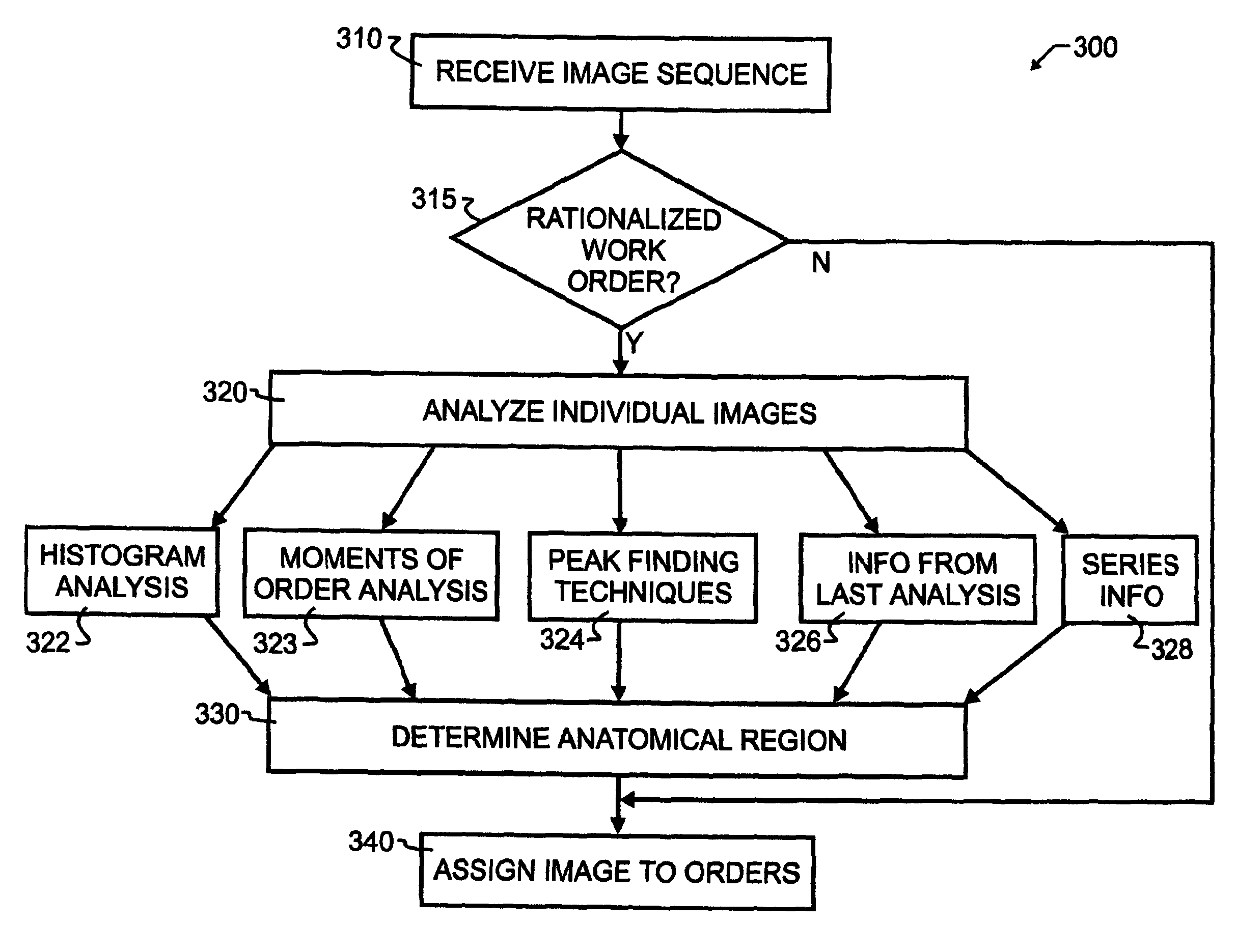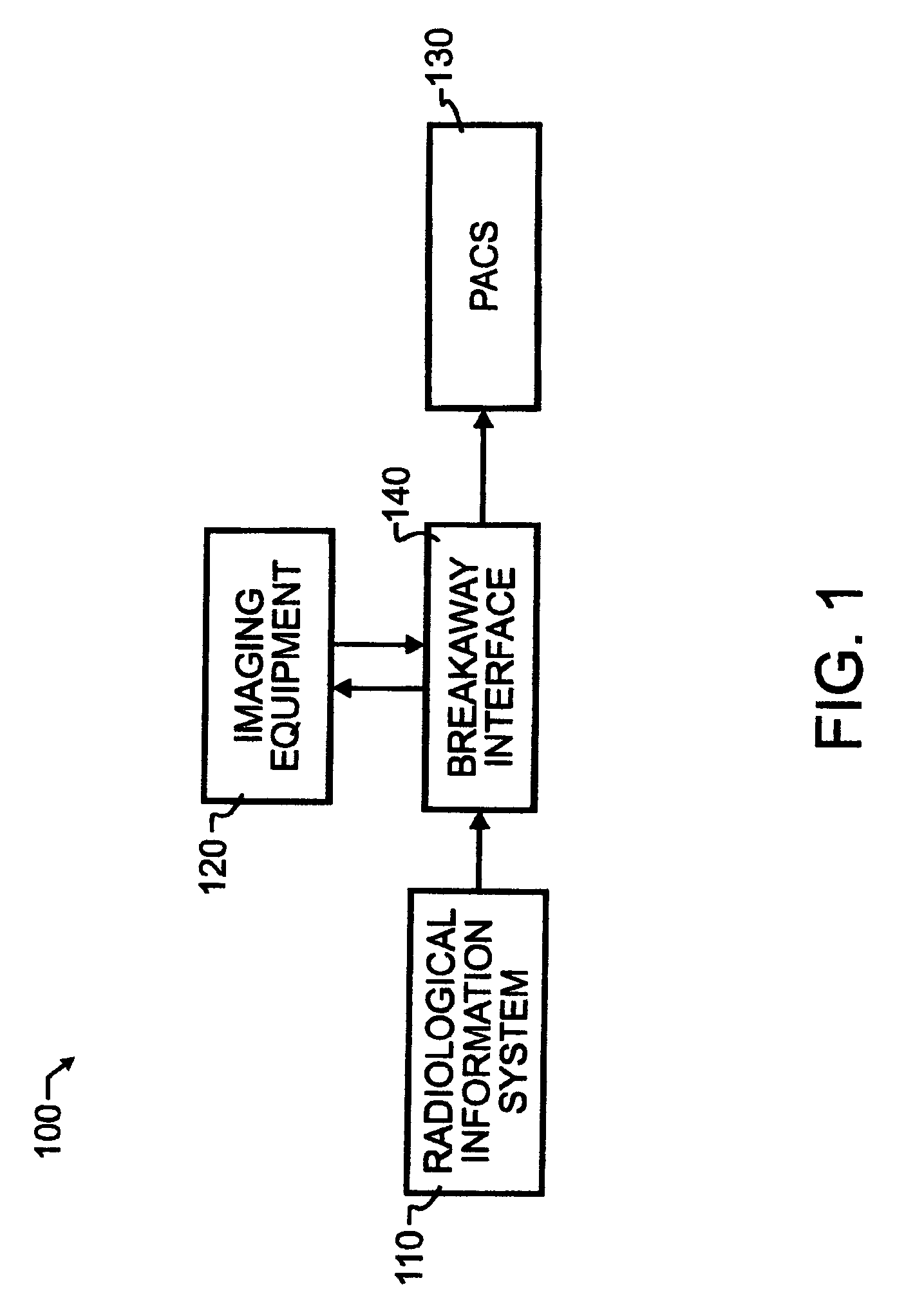Breakaway interfacing of radiological images with work orders
a work order and radiological image technology, applied in the field of computer-aided imaging systems and computer-aided radiological information systems, can solve the problems of inability to accurately assess the accuracy of radiological images, the slice may not be evenly distributed across the patient's body, and the machine is a very expensive asset, so as to reduce the need for human intervention, improve the effect of highly automated communication, and reduce the likelihood of errors
- Summary
- Abstract
- Description
- Claims
- Application Information
AI Technical Summary
Benefits of technology
Problems solved by technology
Method used
Image
Examples
Embodiment Construction
[0024]A preferred embodiment breakaway apparatus 100 and breakaway method 200 of interfacing radiological images with work orders is illustrated in FIGS. 1-3. As illustrated in FIG. 1, breakaway apparatus 100 couples a standard radiological information system 110 or other known or suitable substitute, including a PACS system, to breakaway interface 140. In the preferred embodiment, radiological information system 110 will communicate to breakaway interface 140 by transmission of communications signals using industry standard protocols such as DICOM work lists or HL-7 orders.
[0025]Most preferably, though not essential to the workings of the present invention, the various components within breakaway apparatus 100 will be compliant with the DICOM industry standards. DICOM, which stands for Digital Imaging and Communications in Medicine, is the industry standard for transfer of radiological images and other medical information between computers. Patterned after the Open System Interconn...
PUM
 Login to View More
Login to View More Abstract
Description
Claims
Application Information
 Login to View More
Login to View More - R&D
- Intellectual Property
- Life Sciences
- Materials
- Tech Scout
- Unparalleled Data Quality
- Higher Quality Content
- 60% Fewer Hallucinations
Browse by: Latest US Patents, China's latest patents, Technical Efficacy Thesaurus, Application Domain, Technology Topic, Popular Technical Reports.
© 2025 PatSnap. All rights reserved.Legal|Privacy policy|Modern Slavery Act Transparency Statement|Sitemap|About US| Contact US: help@patsnap.com



